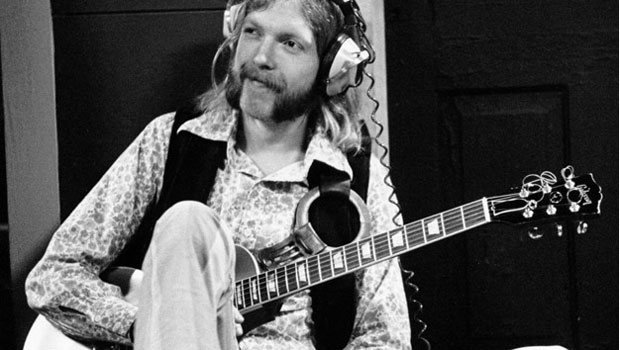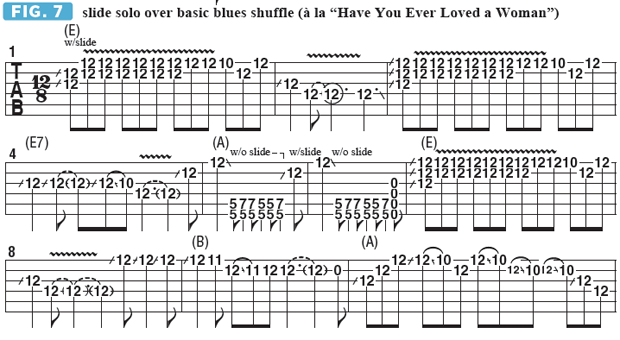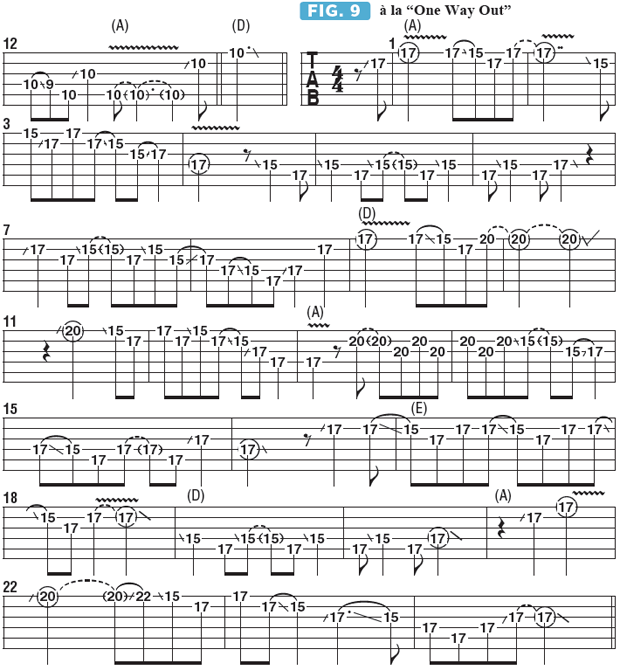Slidedog: The Slide Guitar Mastery of Duane Allman
Learn Duane Allman's slide guitar techniques in this comprehensive lesson.

Last time, we examined the guitar genius of the great Duane Allman, who, as founder of the Allman Brothers Band, rose to prominence as one of the greatest and universally heralded blues-rock guitarists of all time.
We focused on his single-note soloing on classic Allman Brothers’ cuts like “Stormy Monday” and “Whipping Post.” This month’s column is dedicated to Duane’s mastery of the art of slide guitar.
Duane possessed an instantly recognizable sound on electric slide, earmarked by masterful phrasing and smooth, “singing” vibrato.
Great examples of his slide guitar prowess include “Trouble No More” and “Dreams” from the band’s debut release, The Allman Brothers Band; “Don’t Keep Me Wonderin’,” from Idlewild South; “Statesboro Blues” and “Done Somebody Wrong” from At Fillmore East; and “One Way Out” from Eat a Peach.
He also lent inspired slide work to the title track and many others on the Derek and the Dominoes album Layla and Other Assorted Love Songs.
Incredibly, Duane had been playing slide guitar for only about a year at the time of the band’s debut release. He recalled, “I heard Ry Cooder playing slide on Taj Mahal’s debut album, and I said, ‘Man, that’s for me.’ ” Brother Gregg Allman concurs. “He just picked it up and started burnin’. He was a natural.”
For slide playing, Duane wore a small glass Coricidin bottle (Coricidin was a cold medication) on his ring finger. He usually played slide in open tunings, most often open E (low to high, E B E G# B E) and occasionally open A (E A E A C# E). He also played slide in standard tuning on songs such as “Dreams” and “Mountain Jam.”
In the early days, Duane would re-tune his gold-top Gibson Les Paul between songs in order to play slide. Later, co-guitarist Dickey Betts gave Duane a two-pickup 1961 Gibson SG/Les Paul Standard that was used solely for slide playing. The design of the SG, with its double-cutaway body, is well suited to slide work, allowing easy access to the upper regions of the fretboard.
Duane chose to wear the SG high on his body to facilitate navigating the board overall. The musical examples in this column focus on the use of open E tuning for slide. FIGURE 1 illustrates how to tune to open E: the sixth, second and first strings are tuned normally (E, B and E); the fifth and fourth strings are tuned one whole step higher (A to B and D to E); and the third string is tuned one half step higher (G to G#). The resulting tuning is, low to high, E B E G# B E. Strumming across all of the open strings sounds an E major chord.
The same is true when barring or placing the slide across all of the strings at the 12th fret. Likewise, barring a finger or placing the slide across all of the strings at any given fret will form a major chord, as shown in FIGURE 2. A great majority of slide licks in open E tuning are formed by moving back and forth between a two-fret span of the fretboard.
FIGURE 3 illustrates one such pattern, which forms an E hybrid scale, one that combines elements of E minor pentatonic (E G A B D) and E major pentatonic (E F# G# B C#). Two notes are sounded on each string at either the 10th or 12th fret, and three notes are sounded on the fifth string with the inclusion of G#, at the ninth fret.
Practice this pattern by first fretting normally, and then play it using the slide. Some basic rules for slide playing: For proper intonation, you’ll want to, in most cases, position the slide directly over and parallel to the fret wire. Apply only enough pressure against the string to sound a note clearly; do not allow the slide to “bang” into the frets. Also, lightly lay unused fret-hand fingers across the strings behind the slide to help suppress unwanted overtones and ghost notes.
When playing slide, Duane fingerpicked exclusively, using his thumb, index and middle fingers to pick the strings. A major element in the uniqueness of his sound was his pick-hand muting techniques: while one finger picked a string, the other two were used for muting.
For example, when he picked a string with his thumb, his index and middle fingers would rest lightly on the higher strings, muting them; when he picked a string with his index finger, his thumb would mute the lower strings; and when he picked with his middle finger, he would mute the string with his thumb and index fingers. This technique afforded Duane’s slide playing unparalleled clarity and precision. An essential slide exercise involves sliding back and forth between notes of the E hybrid scale, with careful attention paid to playing “in tune.”
FIGURES 4 and 5 offer two different ways one can practice sliding to and from each note in this position. One of the most common vehicles for slide soloing in blues and rock is the 12-bar blues shuffle. FIGURE 6 illustrates a basic shuffle rhythm part played in the key of E using open E tuning. Use only conventional fretting (no slide) to perform this part. FIGURE 7 offers an example of how to play a slide solo over this rhythm part: repeatedly moving the slide back and forth (higher and lower) on the fretboard creates the sound of a slide vibrato.
The “width” of this movement, as well as the speed, is every player’s choice; strive to keep the center of the vibrato movement over the fret for proper intonation. The aforementioned “Statesboro Blues” and “One Way Out” are celebrated slide guitar masterpieces. FIGURE 8 illustrates a “Statesboro Blues”-like solo, and FIGURE 9 offers a solo in the style of “One Way Out.”
Work through each example carefully, and for inspiration, listen to the recordings and pay strict attention to every detail in Duane’s articulation.
PART ONE



PART TWO

Get The Pick Newsletter
All the latest guitar news, interviews, lessons, reviews, deals and more, direct to your inbox!
Guitar World Associate Editor Andy Aledort is recognized worldwide for his vast contributions to guitar instruction, via his many best-selling instructional DVDs, transcription books and online lessons. Andy is a regular contributor to Guitar World and Truefire, and has toured with Dickey Betts of the Allman Brothers, as well as participating in several Jimi Hendrix Tribute Tours.
“There are so many sounds to be discovered when you get away from using a pick”: Jared James Nichols shows you how to add “snap, crackle and pop” to your playing with banjo rolls and string snaps
Don't let chord inversions bamboozle you. It's simply the case of shuffling the notes around








![Joe Bonamassa [left] wears a deep blue suit and polka-dotted shirt and plays his green refin Strat; the late Irish blues legend Rory Gallagher [right] screams and inflicts some punishment on his heavily worn number one Stratocaster.](https://cdn.mos.cms.futurecdn.net/cw28h7UBcTVfTLs7p7eiLe.jpg)


